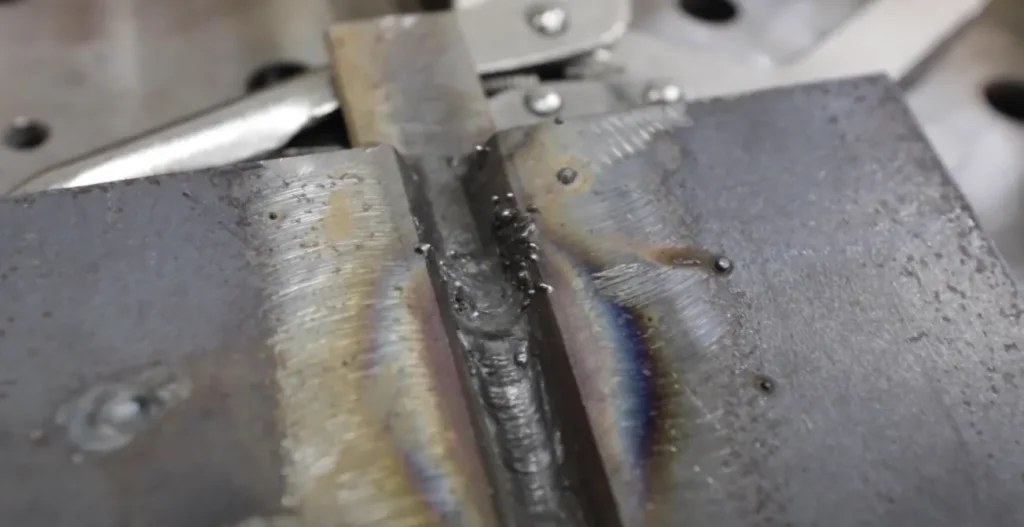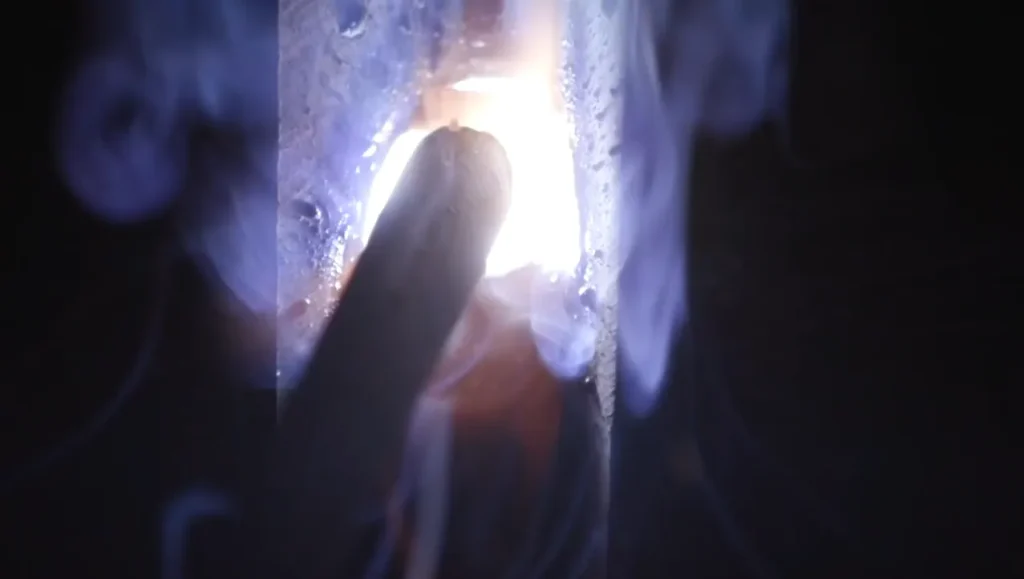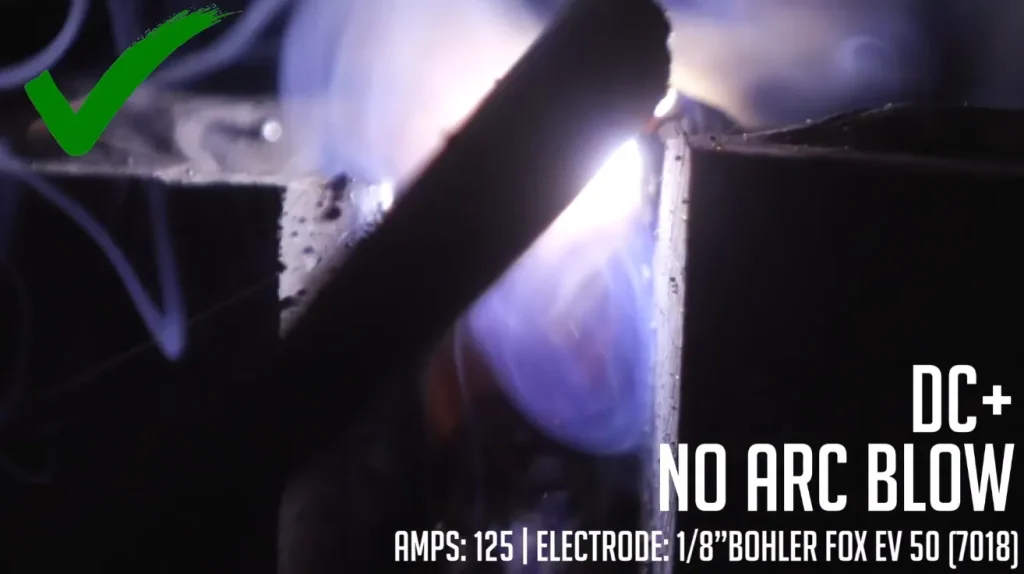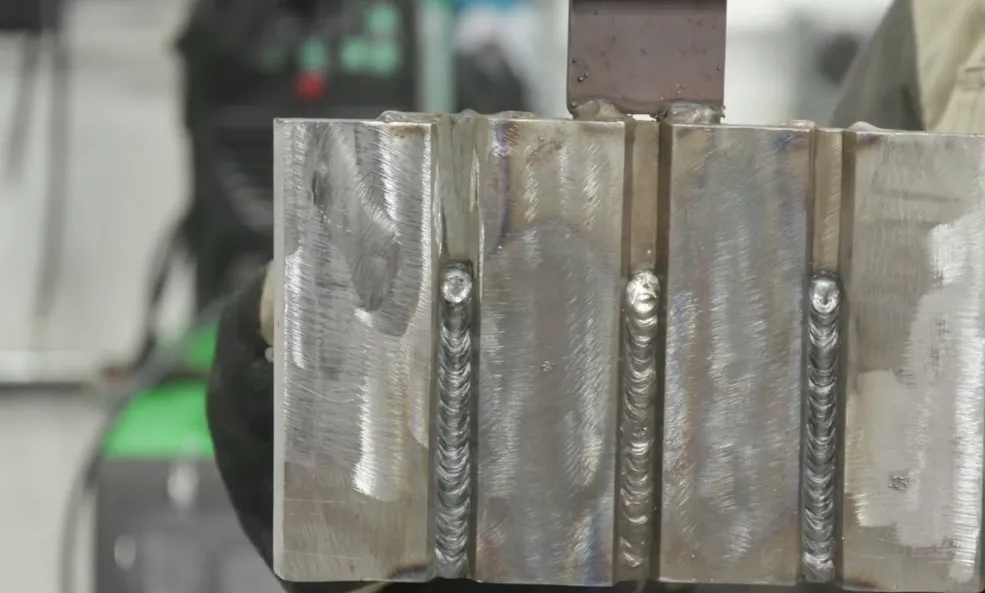Definition of Arc Blow in Welding
Arc blow is a phenomenon that occurs during the welding process when the electric arc deviates from its intended path, leading to an unstable and unpredictable arc. This deviation is primarily caused by the interaction of magnetic fields generated by the welding current and the workpiece. Arc blow can result in poor weld quality, including defects such as porosity, undercutting, and incomplete fusion, making it a critical issue for welders to understand and control.
Importance of Understanding and Controlling Arc Blow

Understanding arc blow is crucial for several reasons. Firstly, it directly impacts the quality and integrity of the welds. Poor weld quality can lead to structural failures, which can be catastrophic in critical applications such as construction, automotive, and aerospace industries. Secondly, controlling arc blow ensures the safety of the welding operation.
Unstable arcs can cause spatter, burns, and other hazards to the welder and surrounding equipment. Lastly, minimizing arc blow enhances productivity by reducing the need for rework and repairs, leading to more efficient and cost-effective welding operations.
By comprehending the causes and effects of arc blow, welders can implement appropriate measures to mitigate its impact, ensuring high-quality, safe, and efficient welding processes. In the following sections, we will delve deeper into the causes of arc blow, its consequences, and the strategies to prevent and control this phenomenon.
Causes of Arc Blow
Magnetic Arc Blow
- Magnetic Fields Around the Weld
Magnetic arc blow occurs due to the magnetic fields generated by the welding current. When welding with direct current (DC), the magnetic field around the electrode and workpiece can become uneven. This uneven magnetic field exerts a force on the arc, pushing it away from its intended path. The distortion is most prominent at the start or end of a weld and in corners or at the edges of the workpiece. - Impact of DC Welding
DC welding is particularly susceptible to magnetic arc blow because the direction of the current flow remains constant. This constant direction can cause a buildup of magnetic forces that deflect the arc. The higher the welding current, the stronger the magnetic field and the greater the likelihood of experiencing arc blow. This is why DC welding, especially at high currents, requires careful attention to avoid arc blow.
Thermal Arc Blow
- Temperature Differences in the Welding Zone
Thermal arc blow is caused by the differences in temperature within the welding area. As the temperature increases, the conductivity of the metal changes, affecting the stability of the arc. The heat can cause the arc to wander, making it difficult to maintain a consistent weld bead. - Impact on Arc Stability
The uneven heating can create thermal gradients, leading to thermal arc blow. This type of arc blow is less common than magnetic arc blow but can still significantly impact the quality of the weld. It is more likely to occur when welding on materials with varying thicknesses or when the heat input is not adequately controlled.
Consequences of Arc Blow

Impact on Weld Quality
Arc blow can severely compromise the quality of a weld. When the arc is deflected, it can cause several defects, including:
- Porosity: Small cavities or pores in the weld metal caused by trapped gas.
- Undercutting: A groove melted into the base metal adjacent to the weld toe or root and left unfilled by weld metal.
- Incomplete Fusion: Lack of complete melting and fusion of the weld metal with the base metal.
These defects weaken the weld and can lead to failures under stress.
Welding Defects Caused by Arc Blow
Arc blow can lead to various welding defects, which can have serious implications for the integrity and strength of the welded structure. Common defects include:
- Spatter: Small particles of molten metal that are scattered around the weld area, making the weld look rough and requiring additional cleaning.
- Excessive Penetration: Occurs when the weld metal penetrates too deeply into the base metal, creating an uneven and weak weld.
Increased Risk of Accidents and Safety Issues
Arc blow not only affects the quality of the weld but also poses safety risks. An unstable arc can lead to spatter and sparks, which can cause burns and other injuries to the welder. Additionally, the deflection of the arc can result in unintended contact with the workpiece or surrounding materials, increasing the risk of accidents.
Prevention and Control of Arc Blow

Use of AC Welding
One effective way to mitigate arc blow is to use alternating current (AC) welding instead of direct current (DC). In AC welding, the direction of the current alternates, reducing the buildup of magnetic fields that cause arc blow. This alternating nature helps balance the magnetic forces, leading to a more stable arc. While AC welding may not be suitable for all applications, it is a practical solution for many situations where arc blow is a persistent problem.
Adjusting the Position of the Ground Clamp
Proper grounding is essential for preventing arc blow. By strategically placing the ground clamp, welders can reduce the influence of magnetic fields on the arc. The ground clamp should be positioned as close to the weld area as possible and on the opposite side of the direction of welding. This setup helps to neutralize the magnetic field, stabilizing the arc. Moving the ground clamp during welding can also help maintain a consistent arc and prevent blow.
Reducing Welding Current
Lowering the welding current can minimize the magnetic field strength around the arc, reducing the likelihood of arc blow. Although high currents can increase welding speed and penetration, they also amplify the magnetic forces that cause arc blow. By reducing the current to an optimal level, welders can achieve a balance between efficiency and arc stability. Adjusting the current settings based on the specific requirements of the weld can help manage arc blow effectively.
Welding Techniques to Avoid Arc Blow
- Welding Away from the Ground Clamp
One practical technique to avoid arc blow is to weld in a direction away from the ground clamp. This method helps in distributing the magnetic fields more evenly, preventing them from distorting the arc. Starting the weld at the point farthest from the ground clamp and moving towards it can also be beneficial. - Using Shorter Arc Lengths
Maintaining a shorter arc length can help reduce the effects of magnetic fields on the arc. A longer arc is more susceptible to deflection by magnetic forces, while a shorter arc provides greater stability. Welders should aim to keep the arc length as short as possible without compromising the weld quality.
Tools and Equipment to Mitigate Arc Blow
Ground Clamps and Earthing Tools
Several specialized tools can help manage arc blow by ensuring proper grounding and minimizing magnetic field interference. High-quality ground clamps with secure connections can significantly improve arc stability. Additionally, earthing tools designed to distribute the magnetic fields more evenly can be used to prevent arc blow.
Modern Welding Equipment and Technology
Advancements in welding technology have led to the development of equipment that can help control arc blow. Inverters and power sources with advanced control features can adjust the welding parameters in real time, minimizing the impact of magnetic fields. Some modern welding machines come with built-in features specifically designed to reduce arc blow, providing welders with more reliable and consistent performance.
User Reviews and Recommendations
Gathering feedback from welders who have successfully managed arc blow can provide valuable insights into effective tools and techniques. User reviews and recommendations can highlight the most practical and efficient solutions, helping other welders make informed decisions about the equipment and methods they use.
Training and Techniques for New Welders

Step-by-Step Guide to Controlling Arc Blow for Beginners
For new welders, understanding and controlling arc blow can be challenging. A step-by-step guide can help them develop the necessary skills and techniques. This guide should cover the basics of arc blow, including its causes, effects, and prevention methods. By following a structured approach, beginners can learn how to identify and mitigate arc blow effectively.
- Identify Arc Blow Symptoms: Recognize signs such as arc wandering, spatter, and inconsistent weld beads.
- Proper Grounding: Learn how to correctly position and secure the ground clamp.
- Adjust Welding Parameters: Understand how to set the appropriate current and arc length.
- Use Proper Techniques: Practice welding away from the ground clamp and maintaining a short arc length.
Beginner-Friendly Tips and Techniques
New welders can benefit from practical tips and techniques that are easy to implement. These tips can help them gain confidence and improve their welding skills while minimizing the risk of arc blow.
- Start with AC Welding: Begin with AC welding to avoid the complexities of DC-related arc blow.
- Use a Stable Work Surface: Ensure the workpiece is securely clamped to prevent movement that can affect arc stability.
- Practice Consistency: Focus on maintaining consistent speed and movement to create uniform welds.
- Monitor Heat Input: Pay attention to heat input to avoid thermal gradients that can cause arc blow.
Videos and Tutorials for Practical Learning
Visual aids such as videos and tutorials can be incredibly helpful for new welders. These resources can demonstrate techniques in real-time, providing a clearer understanding of how to manage arc blow.
- Step-by-Step Video Guides: Videos that walk through the welding process, highlighting key steps to prevent arc blow.
- Expert Demonstrations: Tutorials from experienced welders showcasing advanced techniques and tips.
- Interactive Learning: Online platforms offering interactive modules and quizzes to reinforce learning.
Comparing AC and DC Welding: Why Arc Blow Matters
Differences Between AC and DC Welding
Understanding the differences between AC and DC welding is crucial for choosing the right method to prevent arc blow.
- AC Welding: Alternating current changes direction periodically, reducing the buildup of magnetic fields. This makes AC welding less prone to arc blow, especially in applications involving ferromagnetic materials.
- DC Welding: Direct current flows in a single direction, creating a stable arc. However, the constant direction can lead to magnetic arc blow, requiring additional measures to control it.
Why Arc Blow Is More Common in DC Welding
Arc blow is more prevalent in DC welding due to the continuous flow of current in one direction. This creates a consistent magnetic field that can deflect the arc. DC welding at high currents can exacerbate this issue, making it essential to implement strategies such as proper grounding and adjusting welding parameters to mitigate arc blow.
When to Use Each Type of Current
Choosing between AC and DC welding depends on the specific requirements of the welding project. Understanding the advantages and limitations of each type can help welders make informed decisions.
- AC Welding Applications: Suitable for welding ferromagnetic materials, large structures, and scenarios where arc blow is a significant concern.
- DC Welding Applications: Preferred for applications requiring a stable arc and precise control, such as thin materials and critical joints.
Case Studies: Overcoming Arc Blow in Welding Projects
Real-World Examples of Projects Experiencing Arc Blow
Examining real-world case studies provides valuable insights into how arc blow can affect welding projects and the solutions implemented to address it.
- Construction Projects: Instances where arc blow impacted the structural integrity of welded joints and the corrective measures taken.
- Automotive Industry: Challenges faced in welding automotive components and how arc blow was managed to ensure safety and performance.
Solutions and Outcomes After Addressing Arc Blow
Case studies should detail the specific solutions used to overcome arc blow and the outcomes achieved. This includes adjustments in welding techniques, equipment, and processes.
- Improved Weld Quality: Enhanced weld integrity and appearance after implementing arc blow control measures.
- Increased Productivity: Reduction in rework and repair time, leading to more efficient welding operations.
- Enhanced Safety: Safer working conditions and reduced risk of accidents due to stable and predictable arc behavior.
Conclusion
This article has explored arc blow in welding, focusing on its causes, effects, and prevention methods. Key takeaways include understanding the phenomenon, using AC welding, adjusting grounding, and employing specific techniques to control arc blow.
Controlling arc blow is vital for ensuring high-quality welds and maintaining safety. Effective management reduces weld defects, enhances structural integrity, and minimizes the risk of accidents.
Welders should apply the preventive measures discussed to improve their practices. By understanding and controlling arc blow, they can achieve better weld quality, increase productivity, and ensure a safer working environment.
Leave a Reply